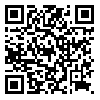1. Begum G, Blacher J. The siblings relationship of adolescents with and without intellectual disabilities. Res Dev Disabil. 2011;32(5):1580–8. [
DOI]
2. Karimi AR, Hassanzadeh S. Peyamad haye dashtan khahar ya baradar asib dide shenavaei [Consequences of having a brother or sister with hearing impairment]. Exceptional Education. 2016;16(138):41–6. [Persian]
3. Beh Pajooh A. Family and children with special needs. Tehran: Avaye Noor Publications; 2012. [Persian]
4. Cuskelly M, Gunn P. Adjustment of children who have a sibling with Down syndrome: perspectives of mothers, fathers and children. J Intellect Disabil Res. 2006;50(12):917–25. [
DOI]
5. Bong M. Academic motivation in self-efficacy, task value, achievement goal orientations, and attributional beliefs. J Educ Res. 2004;97(6):287–98. [
DOI]
6. Lara EB, de los Pinos CC. Families with a disabled member: impact and family education. Procedia-Social and Behavioral Sciences. 2017;237:418–25. [
DOI]
7. Balcells-Balcells A, Giné C, Guàrdia-Olmos J, Summers JA, Mas JM. Impact of supports and partnership on family quality of life. Res Dev Disabil. 2019;85:50–60. [
DOI]
8. Boehm TL, Carter EW. Family quality of life and its correlates among parents of children and adults with intellectual disability. Am J Intellect Dev Disabil. 2019;124(2):99–115. [
DOI]
9. Millere J, Dobelniece S. Quality of life the families with children with disability in regions of Latvia. Regional Formation & Development Studies. 2015;1(17):112–24.
10. Tam CL, Tay EL. Effects of family functioning and family hardiness on self-efficacy among college students. Sunway Academic Journal. 2007;4:99–107.
11. Yaghoubi M, Jamali Firoozabadi M. The relationship between quality of life and parents' hardiness with children's self-efficacy. Journal of Psychology New Ideas. 2021; 9(13):1-11. [Persian] [
Article]
12. Krejcie RV, Morgan DW. Determining sample size for research activities. Educ Psychol Meas. 1970;30(3):607–10. [
DOI]
13. Epstein NB, Ryan CE, Bishop DS, Miller IW, Keitner G. The McMaster model. In: Walsh F; editor. Normal family processes. Abingdon, UK: Taylor & Francis; 2003. [
DOI]
14. Zadeh Mohammadi A, Malek Khosravi Gh. Barrasiye moghaddamati vizhegi haye ravan sanji va etebar yabi meghyas sanjesh karkard khanevade (FAD) [The preliminary study of psychometric and reliability of family assessment Device (FAD)]. Family Research. 2006;2(5):69–89. [Persian] [
Article]
15. Muris P. A brief questionnaire for measuring self-efficacy in youths. J Psychopathol Behav Assess. 2001;23(3):145–9. [
DOI]
16. Tahmassian K. Validation and standardization of Persian version of Self-Efficacy Questionnaire children. Journal of Applied Psychology. 2007;1(4&5):373–90. [Persian]
17. The WHOQOL Group. Development of the World Health Organization WHOQOL-BREF quality of life assessment. Psychol Med. 1998;28(3):551–8. [
DOI]
18. Nedjat S, Montazeri A, Mohammad K, Majdzadeh R, Nabavi N, Nedjat F, et al . Quality of life in multiple sclerosis compared to the healthy population in Tehran. Iranian Journal of Epidemiology. 2006;2(3 and 4):19–24. [Persian] [
Article]
19. Mohammadyfar MA, Kazemi S, Zarei Matekolaee E. The role of students’ family function and self-efficacy in social adjustment. Journal of School Psychology and Institutions. 2016;5(4):146–53. [Persian] [
Article]
20. Bandura A. Self-efficacy: the exercise of control. New York: W. H .Freeman; 1997.
21. Park D-Y, Kim M-J. The effects of family function, health perception, and self-efficacy on health promoting behaviors of nursing college students. The Journal of the Korea Contents Association. 2017;17(6):561–70. [
DOI]
22. Caprara GV, Pastorelli C, Regalia C, Scabini E, Bandura A. Impact of adolescents’ filial self-efficacy on quality of family functioning and satisfaction. J Res Adolesc. 2005;15(1):71–97. [
DOI]

 ، بهنام مکوندی*1
، بهنام مکوندی*1 
 ، سعید بختیارپور1
، سعید بختیارپور1 




